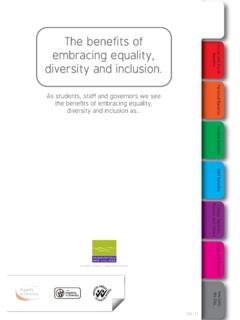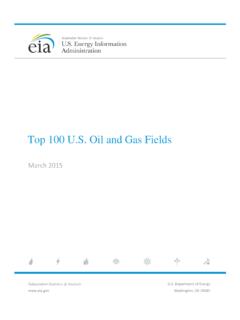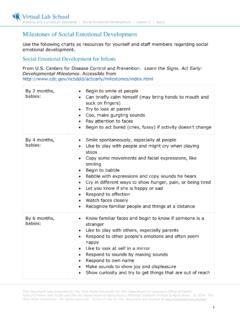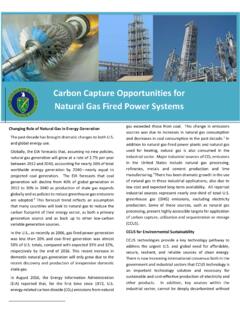Transcription of A LEVEL GEOGRAPHY REVISION GUIDE Paper 1 ... - Schudio
1 A LEVEL GEOGRAPHY REVISION GUIDE Paper 1: Physical GEOGRAPHY 2020 THE WATER AND CARBON CYCLES Water cycles The global hydrological cycle is of enormous importance to life on earth. The global hydrological cycle s operation as a closed system (inputs, outputs, stores and flows) driven by solar energy and gravitational potential energy. The relative importance and size (percentage contribution) of the water stores (oceans, atmosphere, biosphere, cryosphere, groundwater and surface water) and annual fluxes between atmosphere, ocean and land. The global water budget limits water available for human use and water stores have different residence times; some stores are non-renewable (fossil water or cryosphere losses).
2 The drainage basin is an open system within the global hydrological cycle. The hydrological cycle is a system of linked processes: inputs (precipitation patterns and types: orographic, frontal, convectional) flows (interception, infiltration, direct runoff, saturated overland flow, throughflow, percolation, groundwater flow) and outputs (evaporation, transpiration and channel flow). Physical factors within drainage basins determine the relative importance of inputs, flows and outputs (climate, soils, vegetation, geology, relief). Humans disrupt the drainage basin cycle by accelerating processes (deforestation; changing land use) and creating new water storage reservoirs or by abstracting water.
3 (Amazonia) The hydrological cycle influences water budgets and river systems at a local scale. Water budgets show the annual balance between inputs (precipitation) and outputs (evapotranspiration) and their impact on soil water availability and are influenced by climate type (tropical, temperate, polar examples). River regimes indicate the annual variation of discharge of a river and result from the impact of climate, geology and soils as shown in regimes from contrasting river basins. (Yukon, Amazon, Indus). Storm hydrographs shape depends on physical features of drainage basins (size, shape, drainage density, rock type, soil, relief and vegetation) as well as human factors (land use and urbanisation).
4 (P: the role of planners in managing land use). Deficits within the hydrological cycle result from physical processes but can have significant impacts. The causes of drought, both meteorological (short-term precipitation deficit, longer trends, ENSO cycles and hydrological. The contribution human activity makes to the risk of drought: over-abstraction of surface water resources and ground water aquifers. (Sahelian drought; Australia). The impacts of drought on ecosystem functioning (wetlands, forest stress) and the resilience of these ecosystems. Surpluses within the hydrological cycle can lead to flooding, with significant impacts for people.)
5 Meteorological causes of flooding, including intense storms leading to flash flooding, unusually heavy or prolonged rainfall, extreme monsoonal rainfall and snowmelt. Human actions that can exacerbate flood risk (changing land use within the river catchment, mismanagement of rivers using hard engineering systems.) Damage from flooding has both environmental impacts (soils and ecosystems) and socio-economic impacts (economic activity, infrastructure and settlement). (UK flood events 2007 or 2012). Climate change may have significant impacts on the hydrological cycle globally and locally.
6 Climate change affects inputs and outputs within the hydrological cycle: trends in precipitation and evaporation. Climate change affects stores and flows, size of snow and glacier mass, reservoirs, lakes, amount of permafrost, soil moisture levels as well as rates of runoff and stream flow. Climate change resulting from short-term oscillations (ENSO cycles) and global warming increase the uncertainty in the system; this causes concerns over the security of water supplies. (F: projections of future drought and flood risk) There are physical causes and human causes of water insecurity.
7 The growing mismatch between water supply and demand has led to a global pattern of water stress (below 1,700 m per person) and water scarcity (below 1000 m per person). The causes of water insecurity are physical (climate variability, salt water encroachment at coast) as well as human (over abstraction from rivers, lakes and groundwater aquifers, water contamination from agriculture, industrial water pollution). The finite water resource faces pressure from rising demand (increasing population, improving living standards, industrialisation and agriculture), which is increasingly serious in some locations and is leading to increasing risk of water insecurity.
8 (F: projections of future water scarcity). There are consequences and risks associated with water insecurity. The causes of and global pattern of physical water scarcity and economic scarcity and why the price of water varies globally. The importance of water supply for economic development (industry, energy supply, agriculture) and human wellbeing (sanitation, health and food preparation); the environmental and economic problems resulting from inadequate water. The potential for conflicts to occur between users within a country, and internationally over local and trans-boundary water sources (Nile, Mekong).
9 (P: role of different players). There are different approaches to managing water supply, some more sustainable than others. The pros and cons of the techno-fix of hard engineering schemes to include water transfers, mega dams and desalination plants (Water transfers in China). The value of more sustainable schemes of restoration of water supplies and water conservation (smart irrigation, recycling of water) (Singapore). (A: contrasting attitudes to water supply). Integrated drainage basin management for large rivers ( Nile, Colorado) and water sharing treaties and frameworks (United Nations Economic Commission for Europe (UNECE) Water Convention, Helsinki and the Water Framework Directive and Hydropower, Berlin).
10 (P: role of players in reducing water conflict risk). Carbon Cycles Most global carbon is locked in terrestrial stores as part of the long-term geological cycle. The biogeochemical carbon cycle consists of carbon stores of different sizes (terrestrial, oceans and atmosphere), with annual fluxes between stores of varying size (measured in Pg/Gt), rates and on different timescales. Most of the earth s carbon is geological, resulting from the formation of sedimentary carbonate rocks (limestone) in the oceans and biologically derived carbon in shale , coal and other rocks.

















